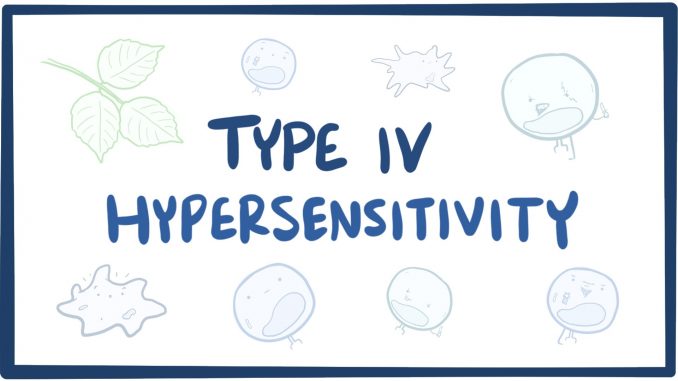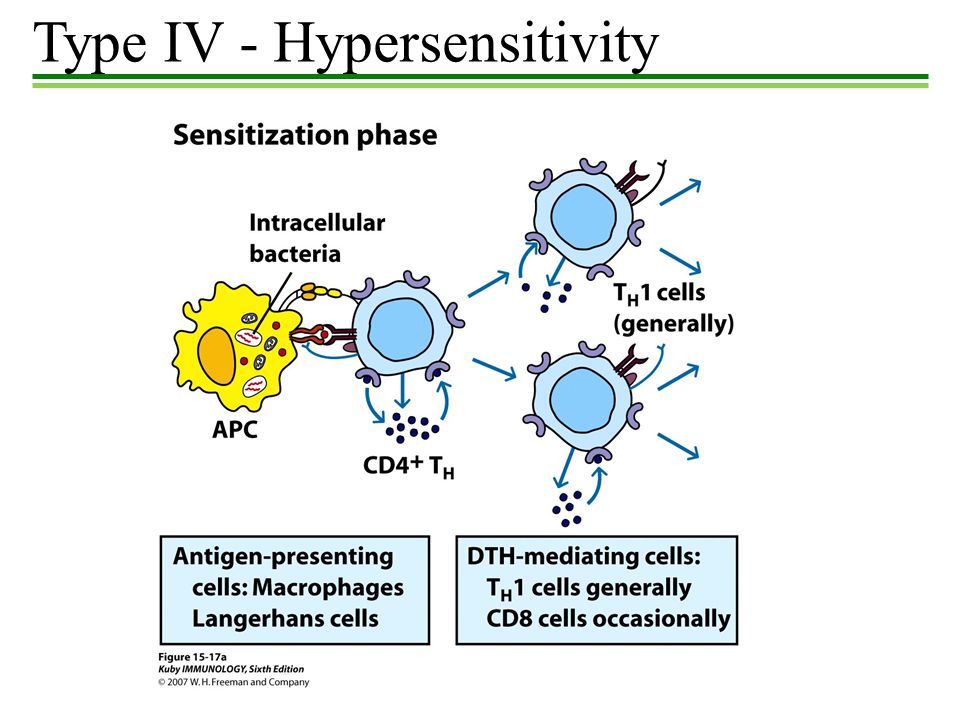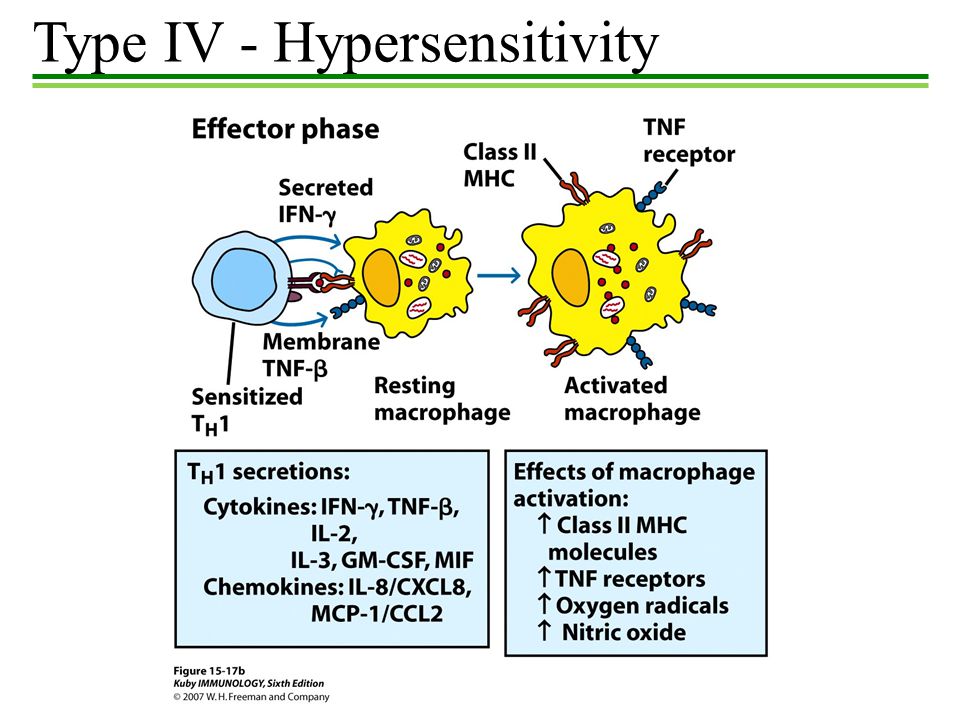
Type IV hypersensitivity reaction or Delayed type hypersensitivity (DTH)
- Type IV hypersensitivity reaction is also known as delayed type hypersensitivity (DTH).
- When some subpopulation of activated T helper cells encounters certain antigen, they secrete cytokines that induce a localized inflammatory reaction called delayed type hypersensitivity (DTH). The reaction is characterized by influxes of non-specific inflammatory cells particularly macrophages.
- DTH occurs slowly and reaches a peak level within 48-72 hours after 2nd encounter of antigen.
- In DTH tissue damage is mediated by Th cells and macrophages but not by antibodies.
- Although DTH causes some tissue damage, it is very important defense mechanism against intracellular microorganisms such as Mycobacterium tuberculosis, Mycobacterium leprae, Brucella spp, etc.
DTH occurs in two phases:
1. Sensitizing phase of DTH:

- DTH begins with initial sensitization by primary contact with antigen. At first antigen is processed and presented by antigen presenting cells (APCs) to CD4+T cell.
- CD4 +T cells are activated to form TH cells.
- During this TH cells are clonally expanded by binding with MHC-II molecule carrying antigen by appropriate APCs. Varieties of APCs have been shown to be involved in activation of DTH response including langerhans cell and macrophages.
- CD4+ T cell are the primary cell activated during sensitizing phase of DTH response. However in some cases CD8 + cells are also found to induce DTH response.
2. Effector phase of DTH:

- A subsequent or second time exposure to antigen induces the effector phage.
- In this phase, TH1 cell secretes varieties of cytokines that recruits and activates macrophages and other non-specific inflammatory cells to the site of antigen injection.
- Macrophages are the principle effector of DTH response. The activated macrophages exhibit increased level of phagocytosis and increased ability to kill the antigen (microorganisms) by various cytotoxic lytic enzymes.
- Activated macrophages releases lytic enzymes that damage surrounding tissues and intracellular bacteria.
- The influx and activation of macrophages in DTH is important in host defense against intracellular bacteria and parasite, where circulating antibodies cannot reach them.
- Increased phagocytic activity and build up lytic enzyme from macrophages in the area of infection leads to non-specific destruction of tissues and intracellular pathogens.
- Generally pathogens are killed rapidly with little tissue damage. However in some case, especially if the antigen is not easily cleared, a pro-long DTH response can itself become destructive to host as intensive and chronic inflammation develops into a visible granulomatous reaction.
- A granuloma develops when continuous activation of macrophages induces the epitheloid shape and some time fusion of macrophages to form multinucleated giant cells. These giant cells displace normal cells forming palpable nodules and release high concentration of lytic enzymes which destroy surrounding tissues leading to necrosis.
Examples of Type IV hypersensitivity reaction:
- Tuberculin skin test (Mantoux test)
- Lepromin test
- Brucellergin test
